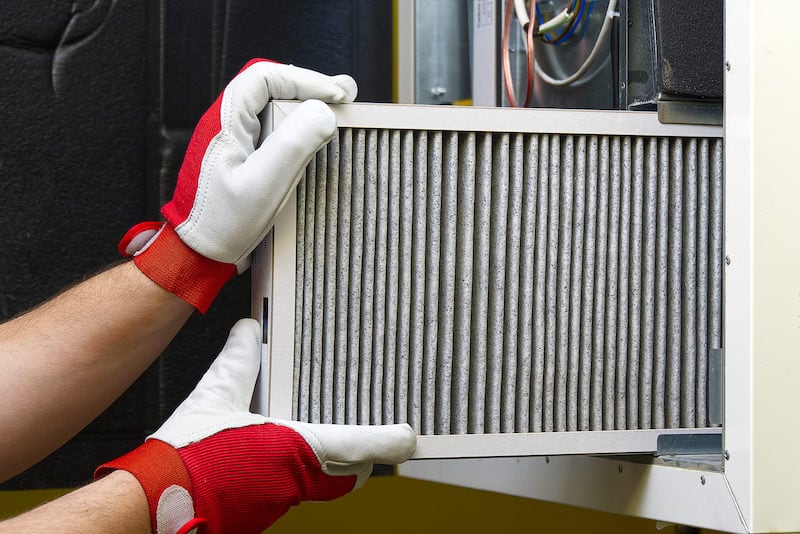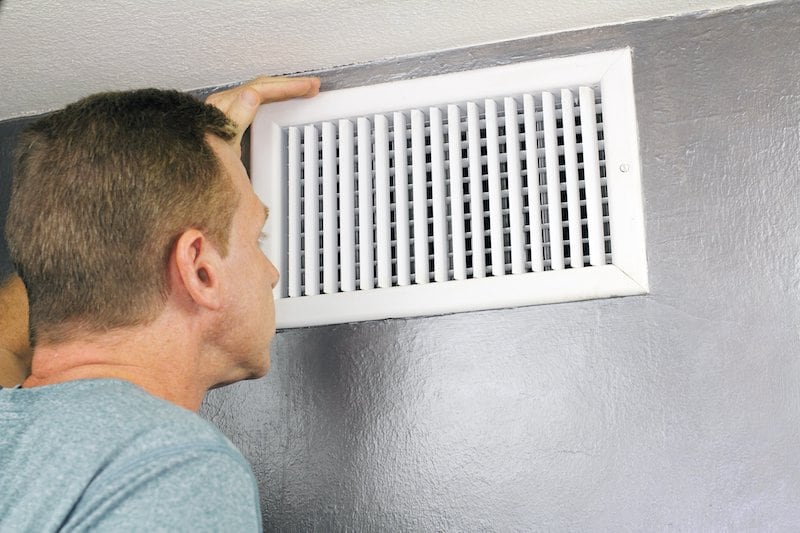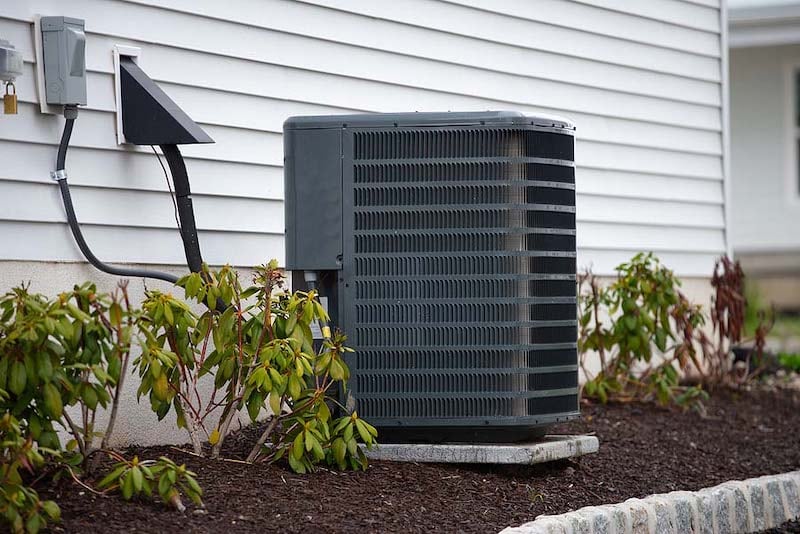When heating season rolls around it's nice to know that you have a reliable and efficient heating system. But even the best-designed, built, and installed heating system can suffer from breakdowns and lower efficiency if you neglect routine maintenance.
In this article, we'll outline maintenance steps and maintenance items you can check off your list to keep your heating system in tip-top shape.
You depend on your home’s furnace for warmth and comfort. So don’t leave proper furnace maintenance to chance and suffer problems or breakdowns when you least expect them. You don’t have to be an expert to help keep your furnace running smoothly. Even if you’re not handy with tools, or know what's behind the furnace doors, there are many simple steps you can take to keep your furnace working at its best.
These 9 furnace maintenance tips are well within the ability level of the average homeowner. Read through them and then add them to your regular home maintenance checklist. You’ll enjoy knowing that you’ve taken some concrete steps to prolong the life of your furnace and keep it operating at peak efficiency.
One of the simplest ways to maintain the efficiency of your heating system or air conditioning system is to change your furnace filter regularly. A dirty air filter can impede the flow of air through your heating system, so the fans in your blower units have to work harder to move the air necessary to heat your home when dirty filters are in the system.
And let’s not forget the important job that filters do in removing dirt, dust, mold, and allergens from your home’s air. Your old filter will lose its effectiveness in performing this task once it's dirty. Consider purchasing high-quality filters when replacing your existing filters.
If you have pets or live in an area with heavy amounts of pollen, dust, or other airborne pollutants, high-quality filters can make a noticeable improvement in the air that you breathe.
Learn more about indoor air quality and different filter types in this guide.

Are you hearing some odd sounds when your heating system is running? When something doesn’t sound right, it often isn’t. Unusual sounds can be a telltale that there may be a serious problem developing in your furnace.
Get professional help if you hear these four sounds that indicate trouble is coming (or is already here!)
Scraping noises. Metal on metal sounds, or a sound like fingernails on a chalkboard, are often a sign that there is a problem with the furnace’s blower motor wheel.
Screeching sounds. This is likely caused by bad bearings in the furnace motor.
Bangs or pops. Minor pops or bangs can be caused by the metal of your air ducts expanding or contracting. But if you’re burning natural gas or oil in your furnace, loud sounds can indicate a combustion problem in the burner.
Slapping sounds. If you hear something similar to the sound of a baseball card hitting bicycle spokes you probably have something stuck in the blower motors fan blades.
It’s a good idea to have a professional duct cleaning done every few years, particularly if your home is older or you have pets in the home. It’s a great way to remove dust and dander, plus have your ducts checked for leaks or mold buildup.
But you don’t need a professional to keep your vents clean. Once a year, remove the covers to your air vents and vacuum them out thoroughly using your vacuum attachment. This will remove excess dirt and dust and improve your indoor air quality.

It’s not a stretch to say that a clean furnace is a happy furnace. Keeping the area around your heating system clear of dust and debris by regular sweeping and vacuuming will help keep the inside of the furnace clean as well.
Pay attention also to what you’re storing near your heating system. Paint, household cleaners, and other chemicals contain volatile compounds that your furnace can spread throughout the home. Store these away from the air intakes of your furnace.
If you’re feeling up to the task, you can get into the furnace's interior to clean the blower motor and fan of your furnace with a shop vac and an extension hose. Be sure that you’ve turned off the circuit breaker to the furnace and shut off the gas before removing the panel that accesses the blower.
Don’t be afraid to leave this job to a professional, though. They’ll inspect and clean the furnace during regular servicing.
Many furnaces are teamed with heat pumps as part of your home’s HVAC system. Allowing sufficient airflow around these units is important. Don’t allow bushes, tall grass, or other vegetation to grow on or around your outside units. This will impede the airflow into and out of the unit and reduce efficiency.
The manufacturer’s instruction manual for your heat pump should specify the minimum clearance required. But as a rule of thumb, try to keep at least two feet of clearance from buildings, shrubs, or other obstructions from the outside of your heat pumps.

If you have a natural gas furnace, the danger of carbon monoxide poisoning is very real. Carbon monoxide (CO) is an odorless and colorless gas that can be deadly in high concentrations. Your home should have a wall-mounted CO detector on every floor. For extra safety, you can mount detectors in bedrooms as well.
No matter how many CO detectors you have, they’re only useful if the batteries are good. Change the batteries in your CO detectors every six months. In addition, be sure that the outside vents for your furnace are always kept clear to allow exhaust gases to exit your home safely. Learn more about carbon monoxide safety with this guide.
If you own a gas furnace, one of the best ways to check on it is to take an occasional peek at the pilot light. If your pilot light is burning blue, all is well. But a pilot light that’s burning yellow or another color is a sign of trouble and should be checked by a professional.
To examine your pilot light, you’ll need to remove the furnace cover panel. This will reveal the pilot light and the burner assembly. If you find that your pilot light is off, or shuts off regularly, consult with a professional to look into getting this potentially dangerous issue fixed.
HVAC units and furnaces employ condensate lines to channel moisture away from the unit. This keeps the furnace dry and prevents the buildup of mold or mildew that can circulate throughout your home. To make sure the condensate line operates properly, it should be cleaned regularly. To clean your condensate line, follow the steps outlined below.
Always be safe. Turn off power to the furnace at the breaker panel.
Locate the end of the condensate line. These often are outside, but sometimes will lead to a drain in the home.
Check the end of the line for blockages. If there is an obstruction or buildup, clean it with a rag or small brush. You can also use a shop vac to suck out any debris or buildup.
Locate the access point for the line. It’s usually at a T-joint and covered with a PVC cap. Remove the cap and pour in a cup of distilled vinegar. Let this sit for 30 minutes.
Flush the pipe out with water and replace the cap.
Cleaning the condensate line regularly will help prevent blockages and keep your system operating smoothly.
While there are a lot of annual furnace maintenance tasks that you can do to keep your furnace running at peak efficiency, there’s no substitute for preventative furnace maintenance and checkups by qualified and experienced technicians.
Scheduling a twice-yearly checkup is a smart idea, not only for keeping your furnace in top condition but to catch small problems before they become expensive furnace repairs or you need a new furnace. Here are some of the things that furnace techs will check when they perform furnace service maintenance:
You can enjoy peace of mind knowing that these pieces of routine furnace maintenance have been addressed by professionals who are trained to examine your system with a critical eye, and who have the necessary tools and know-how to diagnose and fix small problems before they become big problems.
Why not save money with your regular checkups? Team Enoch’s Membership Programs offer regular maintenance for your HVAC system and more at reasonable prices. Learn more here.
While there are many regular maintenance steps that you can handle, be on the lookout for these signs that it's time to call in a professional.
The flames in a gas furnace should be even in size and color. If they're not, you may have a cracked heat exchanger or dirty burners.
Your flames should burn cleanly and without residue. If you detect soot deposits near your vents, contact a professional to have a look.
If your furnace is turning on and off every few minutes, you're experiencing "short cycling." This is usually caused by a faulty thermostat. Get a professional to examine your thermostat.
Do-it-yourself furnace maintenance can keep your furnace running longer and better. While most of these jobs are simple and can be handled by the average homeowner, some jobs and regular checkups require the expertise of furnace professionals. That’s where Team Enoch can help.
At Team Enoch, we have the expertise and trained professionals you need to diagnose, fix, and correct problems with your furnace, whether small or large.
Performing regular furnace maintenance will ensure a longer life for your system, but if you’re ready to improve or upgrade your furnace and HVAC system, we’re ready to help.
That’s not all. If your home needs attention besides furnace maintenance we also offer plumbing services, electrical services, and roofing services. If you're in the Dallas Fort Worth area Contact us for all your HVAC, roofing, plumbing, and electrical needs. Remember, estimates are always free!
